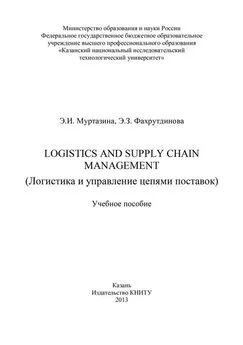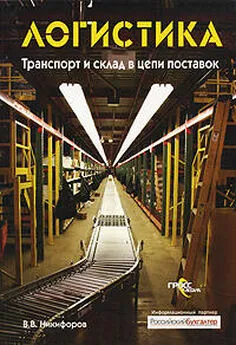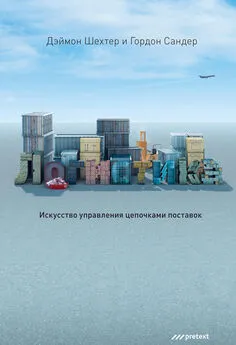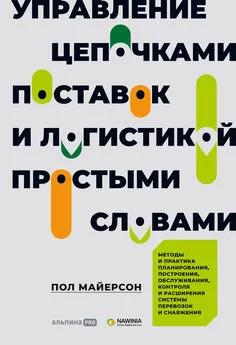Э. Фахрутдинова - Logistics and Supply Chain Management (Логистика и управление цепями поставок)
- Название:Logistics and Supply Chain Management (Логистика и управление цепями поставок)
- Автор:
- Жанр:
- Издательство:Литагент БИБКОМ
- Год:2013
- ISBN:978-5-7882-1434-4
- Рейтинг:
- Избранное:Добавить в избранное
-
Отзывы:
-
Ваша оценка:
Э. Фахрутдинова - Logistics and Supply Chain Management (Логистика и управление цепями поставок) краткое содержание
Logistics and Supply Chain Management (Логистика и управление цепями поставок) - читать онлайн бесплатно ознакомительный отрывок
Интервал:
Закладка:
1. Depending on the complexity and the ......... 1of ............ 2operations there are several categories of the logistics service provider.
2. The management system of the traditional logistics ...... 3providers is limited to tracking ........... 4on behalf of the client company;
3. ......... 5party logistics providers offer value added services for their customers: ............... 6and co-packing, billing and......... 7, tracking-tracing, etc.
4. Among the benefits of outsourcing one can mention .........8 risks, controlling ............ 9costs, eliminating labor ........... 10, accessing new technologies and others.
5. The services of 4 PL providers include ......... 113 PL providers, custom house agents, ......... 12, as well as a range of valueadded services.
6. Fourth party logistics providers are general ............ 13.
8 . Answer the questions:
1. What categories of logistics service providers can be defined?
2. What operations do the traditional logistics service providers carry out?
3. What services do value-added logistics service providers add to the traditional package?
4. Logistics service providers of what type refer to 3 PL?
5. What is the role of logistics services integrators? What does the “quasi-absence of their physical facilities” mean?
6. What are the benefits of outsourcing?
7. What kind of challenges of 3PL can you name?
8. What is the concept of 4PL?
9 . Translate the sentences using the text “Logistics Service Provider”:
1. Существуют компании, которые выполняют только такие логистические операции, как транспортировка и хранение.
2. Некоторые компании к традиционному пакету логистических услуг добавляют дополнительные услуги с добавленной стоимостью: выписывание счетов и составление заказов, отслеживание и контроль.
3. Когда полный комплекс услуг по логистике – от доставки и адресного хранения до управления заказами и отслеживания движения товаров – передается на сторону сторонней организации, это называется «третья сторона в логистике».
4. «Третья сторона в логистике» – это, как правило, комплексный логистический посредник для промышленной или торговой компании.
5. «Общие подрядчики» – это компании, которые интегрируют услуги различных подрядных организаций, координируют посредством управления связанные с ними информационные потоки.
6. 4PL провайдер является интегратором всей логистической цепи предприятия.
10 . Translate the text and give its main idea in English:
Логистический аутсорсингВ период 1970-1980 гг. сформировались так называемые технологии инсорсинга в сфере логистических услуг: 1PL (логистика одной стороны) – когда все операции выполняет сам грузовладелец – свой транспортный парк и водительский персонал – автономная логистика. 2PL (логистика второй стороны) – когда фирма сама планирует и складирует, но не имеет транспортного парка.
В период 1980 -1990 гг. появляется 3PL (или полный аутсорсинг) – логистика третьей стороны, при которой субподрядчики занимаются логистикой фирмы, фирма сама не занимается внешней логистикой.
В период 1990-2000 гг. сформировался 4PL (четвертая сторона в логистике), – когда фирма пользуется услугами генератора логистики, т.е. системного логистического интегратора, предоставляющего услуги по проектированию, интегрированному планированию цепей поставок компании.
Некоторые специалисты полагают, что в связи с развитием электронного бизнеса могут произойти изменения в логистике и возникнет следующий уровень логистических систем операторов – провайдеров – 5PL. Эти провайдеры – виртуальные интегрированные логистические операторы.
11 . Translate the sentences given below using the Unit Vocabulary:
1. The use of the company’s inner resources is called “insourcing”.
2. The rising costs of offshore production have driven corporations to “insourcing”.
3. Adverse macroeconomic conditions accentuate the need for corporations to focus on cost containment in their supply chains.
4. “By 2010, the need for greater supply chain flexibility will overtake product quality and customer service as the major driver for improving supply chain strategy.” (Global Supply Chain Trends Survey, 2008).
5. “A lot of our supply chain design work was really developed in the 1980s and 1990s, when our capital spending was fairly high and oil was 10 bucks a barrel. I could say that the supply chain design is now upside down. The environment has changed.” (Keith Harrison, Procter & Gamble, Head of Global Supply Chain (Financial Times).
12 . Complete each dialogue with the correct form of “going to”, “will”, the present continuous and the present simple (See Language Notes):
1. A: What are you planning to do now? B: We…sign the treaty with the contracting party.
2. A: We need to wait for the truck to come. B: Oh, don’t worry. I ...... (do) billing and ordering.
3. A: We’ve decided to add more services to our usual package. B: Really. What services … you (offer)?
4. A: What about your plans of a new sub-contracting company? B: Well, we..... (outsource) some kinds of production and distribution next year.
5. A: Have you made up your mind to use outside sources? B: Yes, the company ...... (outsource) transport and warehousing services.
6. A: Are you ready for leaving? B: Yes, the plane… (depart) at 7 p.m.
7. The following Monday the representatives of the logistics services integrator… (come) for the meeting.
8. A: What are your nearest plans? B: We all… (develop) appropriate and sustainable pricing systems.
13 . Retell the text “Logistics Service Provider” according to the plan:
A. The traditional Logistics Service Providers;
B. The value-added Logistics Service Providers;
C. «Third-Party Logistics» Providers; benefits of outsourcing;
D. Challenges of 3 PL providers;
E. Logistics services integrators or 4PL providers.
14 . Make the dialogue about logistics service providers:
Useful language: Asking for clarification
What exactly are you saying? What exactly do you mean? Are you saying we need to…? Sorry, I don’t follow you.
Can you explain in more detail?
What I mean is.........
What I’m saying is.......
No, I was thinking of......
To be more specific...... To clarify the matter…
They suggest.....The company proposes that.....
UNIT 5
VALUE-ADDED SERVICES
1 . Read the following international words. Define their meanings comparing them to the meanings of the corresponding Russian words:
code, component, control, credit, defect, document, focus, final, group, identical, industry, modification, product, segment, transportation.
2 . Complete the table using suitable forms:
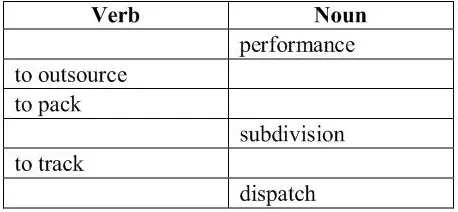
3 . Translate English words and phrases in column A using Russian words and phrases from column B

4 . Observe the words and phrases related to “Value Added Services”:

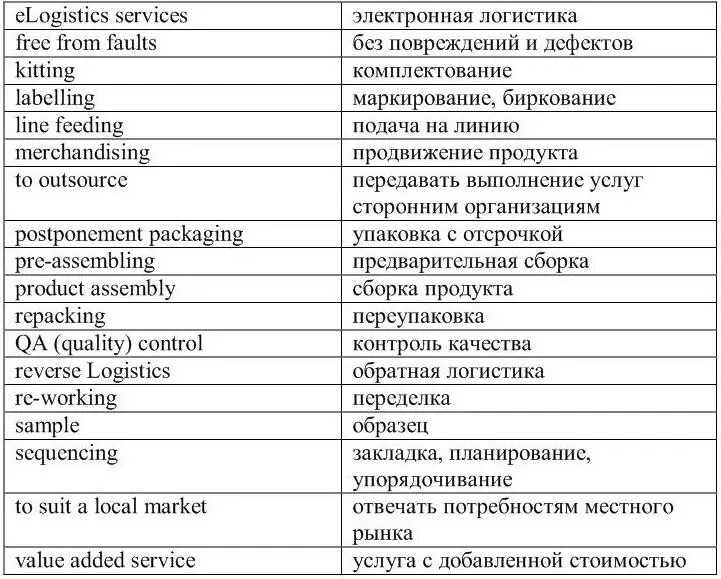
5 . Translate the names of Value Added Services:
Concept whereby a service adds value to a product is called a value added service. In theory distribution adds value because it puts the product into the consumer’s hands.
1. After Sales Service (Reverse Logistics): a specialized segment of logistics focusing on the movement and management of products and resources after the sale and after delivery to the customer. Includes product returns for repair and/or credit.
2. Batch control: tracking the goods via digital easy-to-trace coding system. This control can be based on document counts, record counts, quantity totals, dollar totals, or hash (mixed data, such as customer AR numbers) totals.
3. Bundling/Unbundling: the assembly of a number of pre-packaged products to make up an integrated product offering.
4. Co-packing: packaging operation, often performed by the Logistics Service Provider in a dedicated zone of the warehouse, consisting of wrapping different products together (e.g., to bundle a sample of new product with an old product), or identical products (e.g., in the case of promotional offers).
5. eLogistics services or online logistics services: services that address inefficiencies in the transportation industry, usually involving goods ordered online that can be delivered to the consumer in a timely and efficient manner. The service might include any of the following: order entry, order management, shipment and vehicle tracking, communications and reporting).
6. Kitting: Light assembly of components or parts into defined units. Kitting reduces the need to maintain an inventory of pre-built completed products, but increases the time and labor consumed at shipment.
7. Labelling: the application of labels either to the product or to the packaging.
8. Line feeding: covers the delivery of assembled components to a production line.
9. Merchandising: selling the products; it can include the addition of price stickers or promotional items ready for retail display.
Читать дальшеИнтервал:
Закладка:
